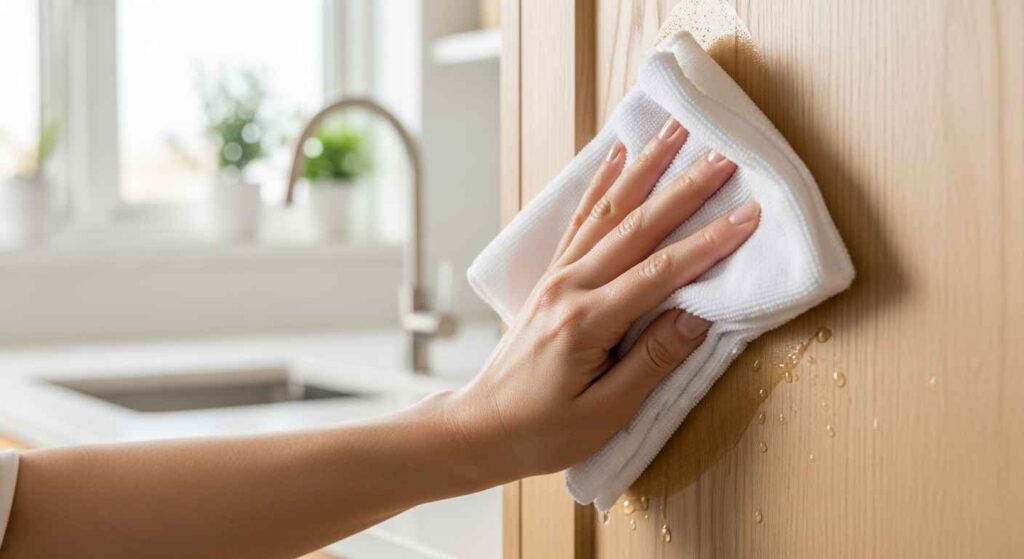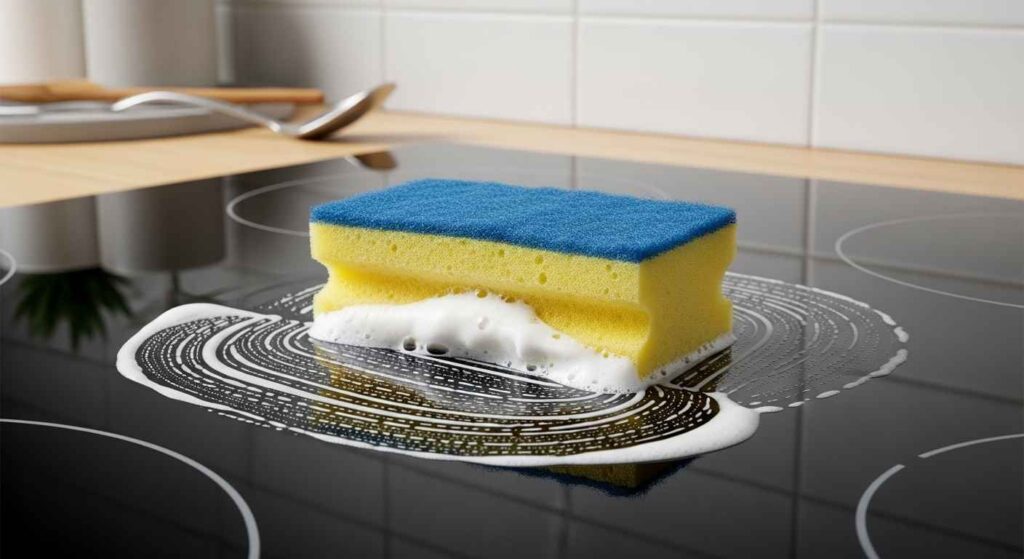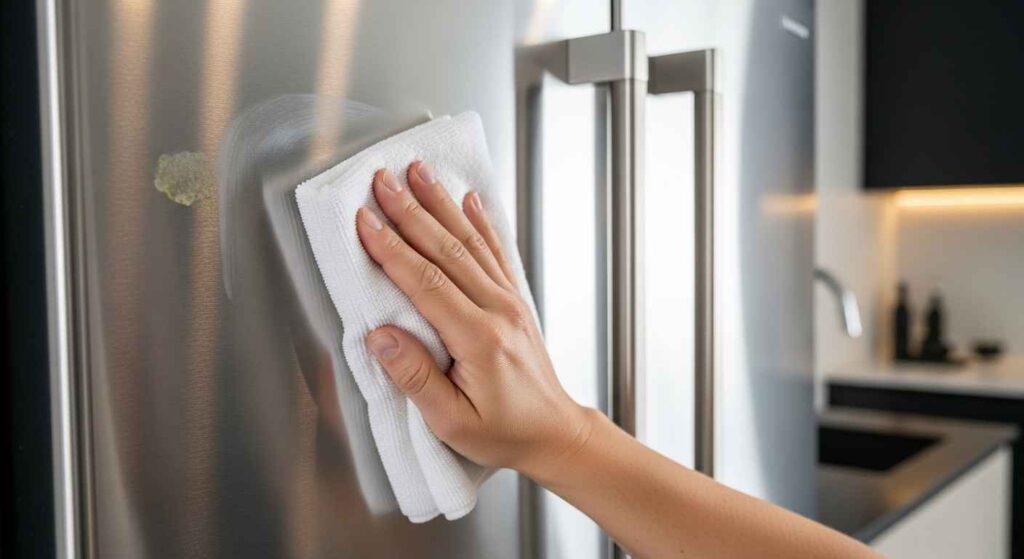Kitchen grease is a common problem. It comes from cooking oils and fats. Grease sticks to surfaces like cabinets, stovetops, and walls. This guide shares simple, effective ways to clean it. Use everyday items to keep your kitchen sparkling. These methods are safe, tested, and up-to-date for 2025.
Why Grease Builds Up
Grease forms when cooking oils turn into vapor. These vapors settle on surfaces. Over time, they become sticky and hard to remove. Regular cleaning prevents buildup. Wipe surfaces daily to make deep cleaning easier.
Supplies You’ll Need
Before starting, gather these items:
- Dish soap (degreasing kind, like Dawn)
- White vinegar
- Baking soda
- Microfiber cloths
- Non-scratch sponges
- Spray bottle
- Rubber gloves
Test cleaners on a small area first. This protects surfaces from damage.
Cleaning Grease from Kitchen Cabinets
Cabinets near stoves get greasy fast. Clean them every two weeks to avoid buildup.
Wood Cabinets
Mix warm water with a few drops of dish soap. Dip a microfiber cloth in the solution. Wring it out well. Wipe along the wood grain to remove grease. Dry immediately with a clean cloth to prevent water marks. For stubborn grease, make a paste with baking soda and water. Apply it to the spot. Let it sit for 10 minutes. Scrub gently with a sponge. Rinse and dry thoroughly.
Gloss Cabinets
Use the same soap-and-water mix. Add a splash of white vinegar for tough grease. Wipe gently to avoid scratches. Dry with a microfiber cloth to prevent streaks. Gloss finishes show smudges, so clean carefully.

For more stain-fighting tips, check our post on 7 Genius DIY Hacks to Banish Stubborn Stains Fast.
Removing Grease from Stovetops
Stovetops face direct grease splatters. Clean them after every use for best results.
Remove grates and knobs. Soak them in hot water with dish soap. For the stovetop, sprinkle baking soda over greasy areas. Add a few drops of dish soap and a pinch of kosher salt. Scrub with a non-scratch sponge. Rinse well with a damp cloth. Dry before reassembling. For glass stovetops, spray white vinegar and let it sit for 5 minutes. Wipe clean with a soft cloth. Avoid abrasive tools to prevent scratches.

Cleaning Grease from Ovens
Ovens collect baked-on grease. Clean them monthly to keep them in top shape.
Mix baking soda with water to form a thick paste. Spread it inside the oven. Let it sit overnight. The next day, scrub with a sponge. Wipe with a vinegar-soaked cloth to remove residue. For oven racks, soak them in hot soapy water for an hour. Scrub off grease and rinse. Dry before placing back.
For more oven care tips, see this guide from Good Housekeeping.
Removing Grease from Walls and Backsplashes
Grease splatters on walls and backsplashes, especially near stoves. Clean them weekly.
Mix equal parts white vinegar and water in a spray bottle. Spray greasy areas. Wait 5 minutes. Wipe with a damp microfiber cloth. Dry to prevent streaks. For tile backsplashes, add a tablespoon of lemon juice to the mix. Its natural acids cut grease effectively. If walls are painted, test the solution on a hidden spot first. Latex paint can absorb grease, making it harder to clean.
Link to our Safe Mold Removal DIY Guide if you notice mold alongside grease.
Cleaning Grease from Stainless Steel Appliances
Stainless steel shows grease and fingerprints easily. Clean it carefully to maintain shine.
Dab a microfiber cloth with a drop of olive oil. Wipe along the grain to lift grease. Buff with a dry cloth for a streak-free finish. For daily cleaning, spray a mix of equal parts vinegar and water. Wipe and dry immediately. Avoid abrasive cleaners to prevent scratches.

Homemade Degreaser Recipes
Store-bought degreasers work, but homemade ones are just as good. They’re cheap and safe.
Basic Degreaser
Combine 1 cup white vinegar, 3 cups water, 1 cup baking soda, and ½ cup dish soap in a spray bottle. Shake well. Spray on greasy surfaces. Let it sit for 5-10 minutes. Wipe clean with a damp cloth.
For Stubborn Grease
Mix baking soda with a little water to make a paste. Add a teaspoon of lemon juice. Apply to grease. Wait 10 minutes. Scrub with a sponge. Rinse and dry. This works well on caked-on spots.
Preventing Grease Buildup
Stop grease before it becomes a problem:
- Use lids or splatter screens when frying.
- Turn on the kitchen exhaust fan.
- Wipe surfaces daily with a damp cloth.
- Clean spills immediately to avoid hardening.
These habits save time and effort.
For more kitchen organization ideas, read our Time-Saving Organization Systems That Work.
Answers to Common Questions
How does vinegar remove grease? Its acetic acid dissolves oil, making it easy to wipe away.
What removes hardened grease? A baking soda paste with dish soap or lemon juice softens it. Let it sit before scrubbing.
Best cleaner for kitchen walls? A vinegar-water mix is safe. Test on painted walls to avoid damage.
Is dish soap enough for grease? It works for light grease. Add baking soda or vinegar for tougher spots.
How often should I clean grease? Wipe surfaces daily. Deep clean weekly or monthly, depending on cooking frequency.
Can I use these on marble? Avoid vinegar on marble. Use dish soap and water instead.
Final Tips for a Grease-Free Kitchen
Clean regularly to avoid tough grease. Use splatter guards to reduce mess. Store cleaning supplies nearby for quick use. These methods are safe, affordable, and effective. They keep your kitchen fresh and hygienic.
For eco-friendly cleaning products, see our post on Best Eco-Friendly Laundry Detergents.
This guide uses current, verified methods from top sources. It avoids harsh chemicals and focuses on natural solutions. Follow these steps for a clean kitchen that stays grease-free.
